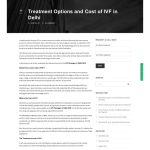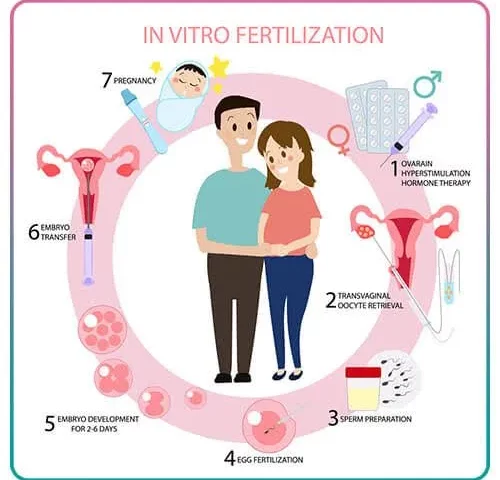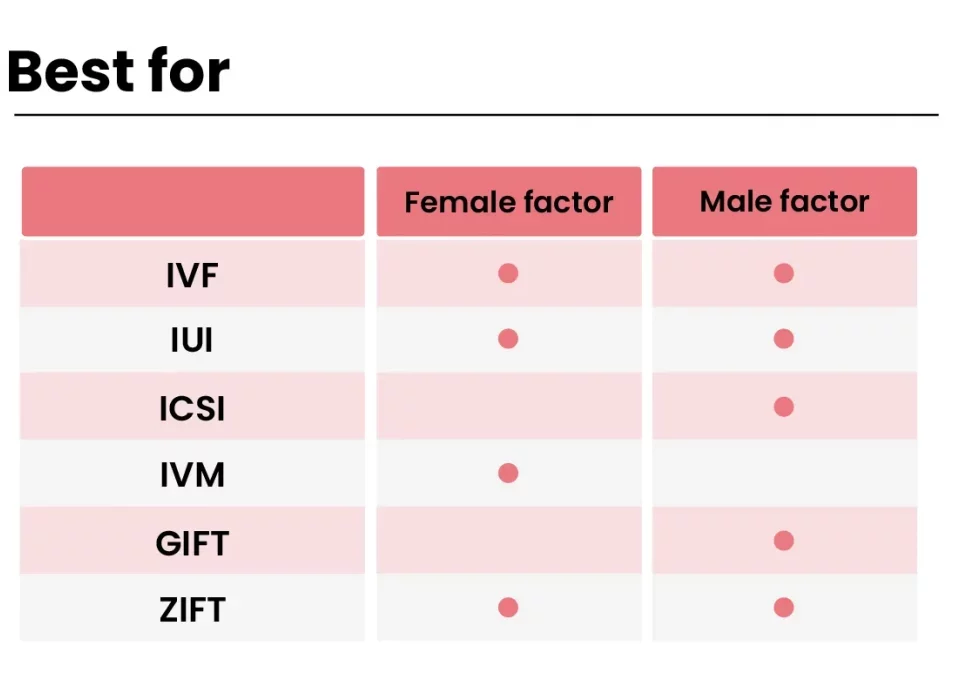
How Much Is IVF Treatment? A Deep Dive Into Costs, Options, and What You Need to Know
April 2, 2025
What Is IUI vs IVF: Your Guide to Fertility Treatments
April 3, 2025What Does IVF Mean? Your Ultimate Guide to Understanding In Vitro Fertilization

What Does IVF Mean? Your Ultimate Guide to Understanding In Vitro Fertilization
In vitro fertilization, or IVF, is a term you might have heard tossed around in conversations about starting a family, especially when things don’t go as planned. But what does it really mean? At its heart, IVF is a medical process that helps people have babies when natural conception isn’t working. It’s a journey filled with hope, science, and sometimes a few surprises along the way. Whether you’re curious about how it works, who it’s for, or what the experience feels like, this guide dives deep into everything you need to know about IVF—way beyond the basics.
Imagine a couple dreaming of a baby but facing roadblocks. Or picture a single person or same-sex couple wanting to build a family on their own terms. IVF steps in as a game-changer, blending cutting-edge technology with a very human desire: parenthood. In this article, we’ll unpack the process, explore its emotional and physical sides, and shine a light on details you won’t find in every quick online summary. Ready to get started? Let’s dive into the world of IVF.
The Basics: What IVF Is and How It Works
IVF stands for “in vitro fertilization,” which sounds fancy but just means “fertilization in glass.” The “glass” part refers to a lab dish where sperm and eggs meet, not inside a person’s body like usual. It’s a multi-step process designed to help people get pregnant when other methods fall short. Here’s how it breaks down in simple terms:
- Step 1: Boosting Egg Production
A woman takes special medicines to make her ovaries produce more eggs than the usual one per month. More eggs mean more chances for success. - Step 2: Collecting the Eggs
Doctors use a tiny needle to gently remove those eggs from the ovaries while the woman is under light sedation. It’s quick, usually about 20 minutes. - Step 3: Fertilizing the Eggs
In a lab, the eggs are mixed with sperm (from a partner or donor). Scientists watch as fertilization happens, creating embryos—tiny beginnings of a baby. - Step 4: Growing the Embryos
The embryos chill in the lab for a few days, growing stronger under a microscope. Experts pick the healthiest ones for the next step. - Step 5: Placing the Embryo
One or more embryos are transferred into the uterus using a thin tube. If all goes well, one sticks around and grows into a baby.
About two weeks later, a pregnancy test reveals the big news. It’s a process that’s part science experiment, part miracle—and it’s helped millions of families grow since the first IVF baby, Louise Brown, was born in 1978.
But IVF isn’t one-size-fits-all. Some people tweak the process—like freezing embryos for later or testing them for genetic issues. It’s flexible, which is why it’s such a powerful tool for so many.
Who Uses IVF? More People Than You Might Think
IVF isn’t just for one type of person. It’s a lifeline for all kinds of families facing unique challenges. Here are some folks who might turn to IVF:
- Couples Struggling with Infertility
Maybe the sperm can’t reach the egg, or the fallopian tubes are blocked. About 1 in 8 couples deal with infertility, and IVF often becomes their best shot. - Single Parents by Choice
Someone who wants a kid without a partner can use donor sperm or eggs with IVF to make it happen. - Same-Sex Couples
Two women might use donor sperm, while two men might team up with an egg donor and surrogate. IVF makes it possible. - People with Genetic Concerns
If a family has a history of serious genetic conditions, IVF can include testing to pick embryos without those risks. - Older Adults
Fertility drops with age, especially after 35 for women. IVF, often with donor eggs, helps folks in their 40s or beyond become parents.
Here’s a fun fact: In 2021, the CDC reported over 86,000 IVF babies born in the U.S. alone. That’s a lot of little miracles! And the numbers keep climbing as more people embrace this option.
Quick Quiz: Is IVF Right for You?
Answer these quick yes-or-no questions to get a feel for it:
- Are you finding it tough to get pregnant after a year of trying?
- Do you dream of a family but don’t have a partner—or the usual setup?
- Are you worried about passing on a health condition?
If you said “yes” to any, IVF might be worth exploring with a doctor.
The Emotional Rollercoaster of IVF
Let’s be real: IVF isn’t just about needles and lab dishes. It’s an emotional ride, too. One day you’re hopeful, picturing a nursery; the next, you’re nervous, waiting for test results. Studies—like one from the journal Fertility and Sterility in 2023—show that up to 40% of people going through IVF feel anxious or stressed at some point. But there’s good news: support makes a huge difference.
Take Sarah, a 34-year-old teacher I heard about through a friend’s story. She and her husband tried IVF after years of unexplained infertility. “The waiting was the hardest,” she said. “Every step felt like a cliffhanger—would the eggs work? Would the embryo stick?” They leaned on online forums, family, and even a therapist to get through it. After two rounds, they welcomed twins. Her tip? “Find your people. You don’t have to do this alone.”
Here’s what can help smooth the ride:
✔️ Talk It Out: Share with friends, a counselor, or a support group.
✔️ Set Small Goals: Celebrate each step—egg retrieval, transfer—like mini victories.
❌ Don’t Bottle It Up: Ignoring feelings can make the lows feel lower.
The Physical Side: What Your Body Goes Through
IVF asks a lot of your body, especially if you’re the one providing the eggs or carrying the pregnancy. The hormone shots can make you feel bloated or moody—like PMS on overdrive. Egg retrieval is a breeze for some, but others feel crampy after. And the embryo transfer? It’s usually painless, like a quick doctor’s visit.
A 2024 study from the American Society for Reproductive Medicine found that about 1 in 5 women experience mild side effects from IVF meds, like headaches or fatigue. Serious risks—like ovarian hyperstimulation syndrome (OHSS), where ovaries overreact—are rare, affecting less than 1% of cases with modern protocols.
Want to prep your body? Try these:
- Eat Smart: Load up on fruits, veggies, and protein to fuel egg production.
- Rest Up: Sleep helps your body handle the hormones.
- Ask Questions: Not sure about a symptom? Call your clinic—they’ve seen it all.
IVF Success Rates: What to Expect
Success isn’t guaranteed with IVF, but the odds might surprise you. The CDC’s 2021 data shows that for women under 35, about 50% of IVF cycles lead to a live birth. That drops with age—around 20% for women 38-40, and 10% for those over 40 using their own eggs. Using donor eggs bumps it back up to 50% or more, no matter the age.
What boosts your chances?
✔️ Age: Younger eggs and uteruses tend to do better.
✔️ Healthy Habits: Smoking or extra weight can lower success—quitting helps.
✔️ Clinic Choice: Some clinics have higher success rates—check their stats online.
Here’s a peek at the numbers in a simple table:
| Age Group | Success Rate (Own Eggs) | Success Rate (Donor Eggs) |
|---|---|---|
| Under 35 | 50% | 55% |
| 35-37 | 38% | 53% |
| 38-40 | 22% | 51% |
| Over 40 | 10% | 50% |
Real talk: It might take more than one try. Many folks do 2-3 rounds before hitting the jackpot—or deciding what’s next.
The Cost of IVF: Breaking Down the Price Tag
IVF isn’t cheap, and that’s a big hurdle for lots of people. In the U.S., one round averages $12,000-$15,000, not counting meds (another $3,000-$5,000). Insurance might cover some, but only 19 states mandate fertility coverage as of 2025, per the National Conference of State Legislatures.
Here’s a rough breakdown:
- Meds: $3,000-$5,000
- Egg Retrieval & Lab Work: $6,000-$8,000
- Embryo Transfer: $3,000-$5,000
Ways to save:
- Grants: Groups like BabyQuest offer financial help.
- Clinics Abroad: Places like Mexico or Spain can cost half as much—think $6,000 total.
- Mini-IVF: A lighter version with fewer meds, sometimes under $10,000.
Sarah, our teacher friend, saved up for a year and got a clinic discount for paying upfront. “It felt like buying a car,” she laughed. “But worth every penny.”
Fresh vs. Frozen Embryos: What’s the Difference?
One choice you might face is whether to use fresh or frozen embryos. Fresh means transferring them right after fertilization; frozen means storing them for later. A 2023 study in The Lancet found frozen embryo transfers have a slightly higher success rate—about 5% more—because the uterus gets a break from hormone overload.
Pros of Frozen:
✔️ Flexibility—use them when you’re ready.
✔️ Better timing for a healthier womb.
❌ Higher lab fees (about $1,000 extra).
Pros of Fresh:
✔️ Faster process—no waiting to try again.
❌ Might not sync with your body’s best moment.
Doctors often suggest frozen these days, but it’s your call based on your timeline and health.
IVF and Twins: Why Multiples Happen
Ever wonder why IVF often leads to twins? It’s because doctors sometimes transfer two embryos to up the odds. In 2021, the CDC noted that 1 in 3 IVF pregnancies resulted in multiples—way higher than the natural rate of 1 in 30. But twins come with extra risks, like premature birth.
New tech, like better embryo testing, means more clinics now transfer just one embryo—called elective single embryo transfer (eSET). It’s safer and still effective, dropping the twin rate to about 10% in top clinics.
Want one baby at a time? Ask about eSET—it’s a smart move for many.
The Science Behind IVF: What’s New in 2025
IVF keeps evolving, and 2025 is bringing some cool updates. Researchers are digging into:
- AI-Powered Embryo Selection: Machines now help pick the best embryos, boosting success by up to 15%, per a Nature Medicine study from 2024.
- Mitochondrial Boosting: Adding extra energy to older eggs might improve quality—early trials show promise.
- Non-Invasive Testing: New blood tests could soon check embryo health without poking them, cutting costs and stress.
These breakthroughs mean better odds and fewer hurdles. Keep an eye out—your clinic might offer them soon.
Poll Time: What’s Your IVF Curiosity?
Which of these sparks your interest? Vote in your head (or share with a friend):
A) How IVF tech is changing
B) The cost and how to afford it
C) The emotional journey
Your pick might guide your next deep dive!
IVF Myths Busted: Separating Fact from Fiction
There’s a lot of chatter about IVF, and not all of it’s true. Let’s clear up some biggies:
- Myth: IVF babies are “unnatural.”
Truth: They’re as natural as any kid—just started in a lab. Studies show no big health differences long-term. - Myth: IVF always works on the first try.
Truth: It’s closer to a 50/50 shot under 35—patience is key. - Myth: It’s only for women.
Truth: Male infertility—like low sperm count—drives 40% of IVF cases, says the NIH.
Heard something wild? Double-check it with a doc—rumors spread fast.
Beyond the Basics: Three Things You Haven’t Heard About IVF
Most articles cover the how-to and the costs, but here are three angles you might not find elsewhere:
1. The Partner’s Role: More Than Just Sperm
If you’ve got a partner, their job isn’t just dropping off a sample. A 2024 survey by Resolve: The National Infertility Association found that couples who split the emotional load—like going to appointments together or researching options—reported 30% less stress. Guys, your support can mean fewer tears and more teamwork. Try cooking dinner during hormone shots or just listening when she needs to vent.
2. IVF’s Environmental Footprint
Ever think about IVF’s green side? Labs use energy for incubators, and all those disposable tools add up. A small 2023 study from Environmental Health Perspectives estimated that one IVF cycle produces about 50 pounds of medical waste—think plastic syringes and petri dishes. Some clinics are going eco-friendly with reusable tools or solar power. It’s a niche topic, but if you’re earth-conscious, ask your clinic about their practices.
3. The “What If It Fails?” Plan
Not every IVF story ends with a baby, and that’s rarely talked about. About 30% of people stop after one failed cycle, per a Human Reproduction study from 2022. But there’s hope beyond that—like adoption, donor embryos, or even a break to rethink. One couple I read about took a year off after two misses, traveled, and came back stronger for round three. It worked. Moral? Failure’s not the end—it’s a detour.
Your IVF Journey: Tips to Get Started
Ready to explore IVF? Here’s a step-by-step guide to kick things off:
- Research Clinics: Look for ones with high success rates and good reviews—check the CDC’s ART database.
- Meet a Specialist: A fertility doc can test you (and your partner) to see if IVF’s the right fit.
- Plan the Money: Save, apply for grants, or look into loans—get creative.
- Build a Support Crew: Friends, family, or a group chat with others in the same boat.
- Take Care of You: Eat well, sleep, and maybe try yoga—your body’s about to work hard.
One woman I heard about kept a journal through her IVF rounds. “It was my sanity,” she said. “I wrote down every shot, every hope.” Little tricks like that can keep you grounded.
IVF Around the World: A Global Snapshot
IVF’s not just a U.S. thing—it’s global. In Japan, over 50,000 babies were born via IVF in 2022, thanks to government subsidies. In India, it’s a $500 million industry, with affordable clinics drawing people from afar. Meanwhile, some countries like Germany limit embryo creation to avoid ethical debates. Where you live shapes your IVF experience—cost, rules, and all.
The Future of IVF: What’s Next?
Looking ahead, IVF could get wilder—and more accessible. Picture this: portable IVF kits for home use, or gene-editing to tweak embryos beyond disease prevention. A 2025 report from The Economist predicts that by 2030, IVF might cost half what it does now, thanks to automation. For now, it’s about making it work for you, wherever you’re starting from.
Checklist: Your IVF Prep List
Before you dive in, tick these off:
✔️ Found a clinic you trust
✔️ Talked money with your partner or bank
✔️ Got a support buddy lined up
✔️ Asked your doc all your questions
✔️ Took a deep breath—you’ve got this!
Wrapping It Up: IVF Is Your Story
IVF isn’t just a medical term—it’s a path to something huge: a family. It’s messy, hopeful, and totally personal. Whether you’re facing infertility over 40, dreaming of a baby as a single parent, or just curious about how it all works, IVF’s a mix of science and heart. It’s not perfect, and it’s not easy, but for tons of people, it’s been worth it.
Think of it like planting a seed. You water it with effort, wait through some storms, and one day, maybe, it blooms. Got questions? Your doctor’s a call away, and millions of stories online show you’re not alone. What does IVF mean to you? That’s the part you get to write.

